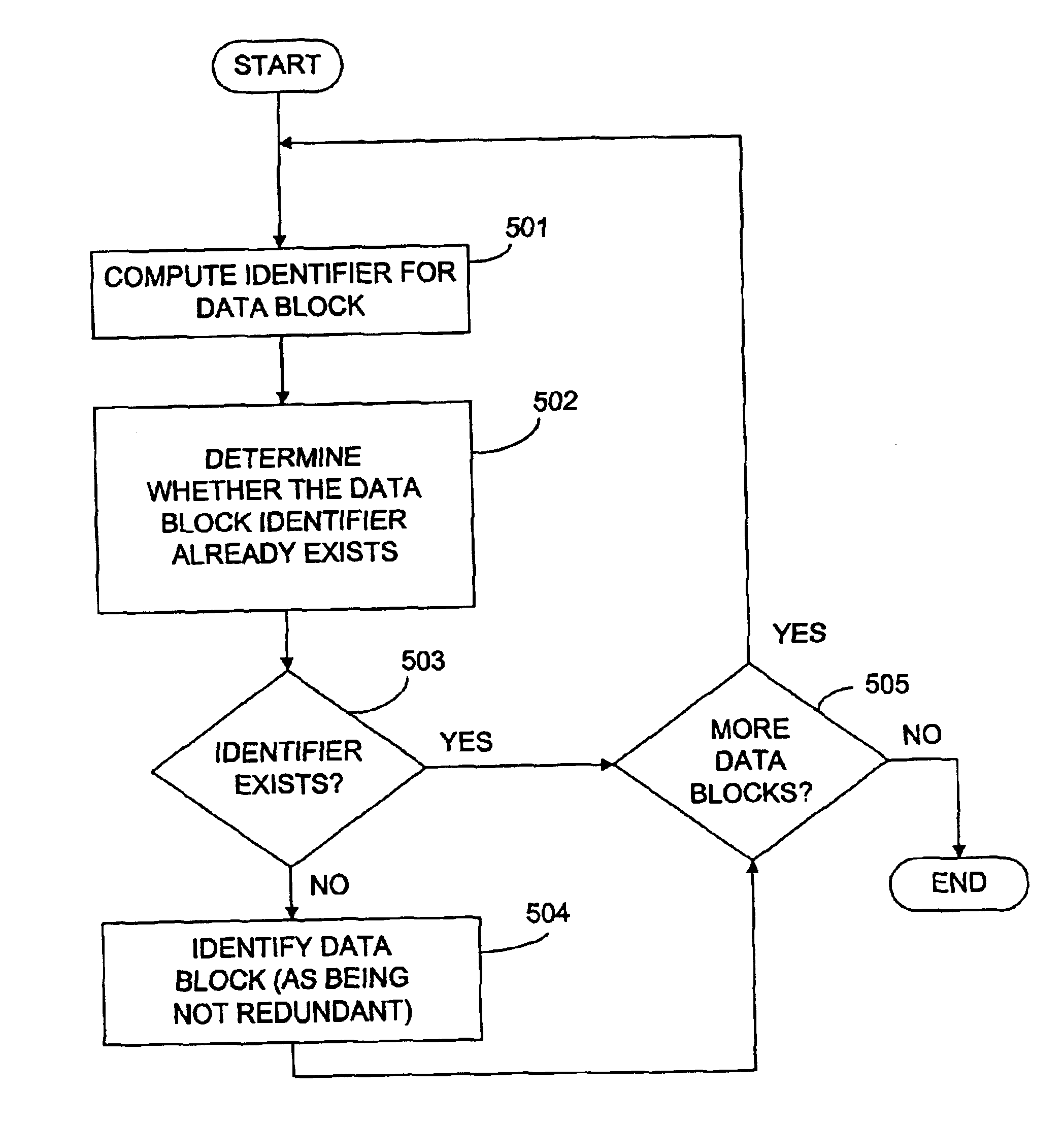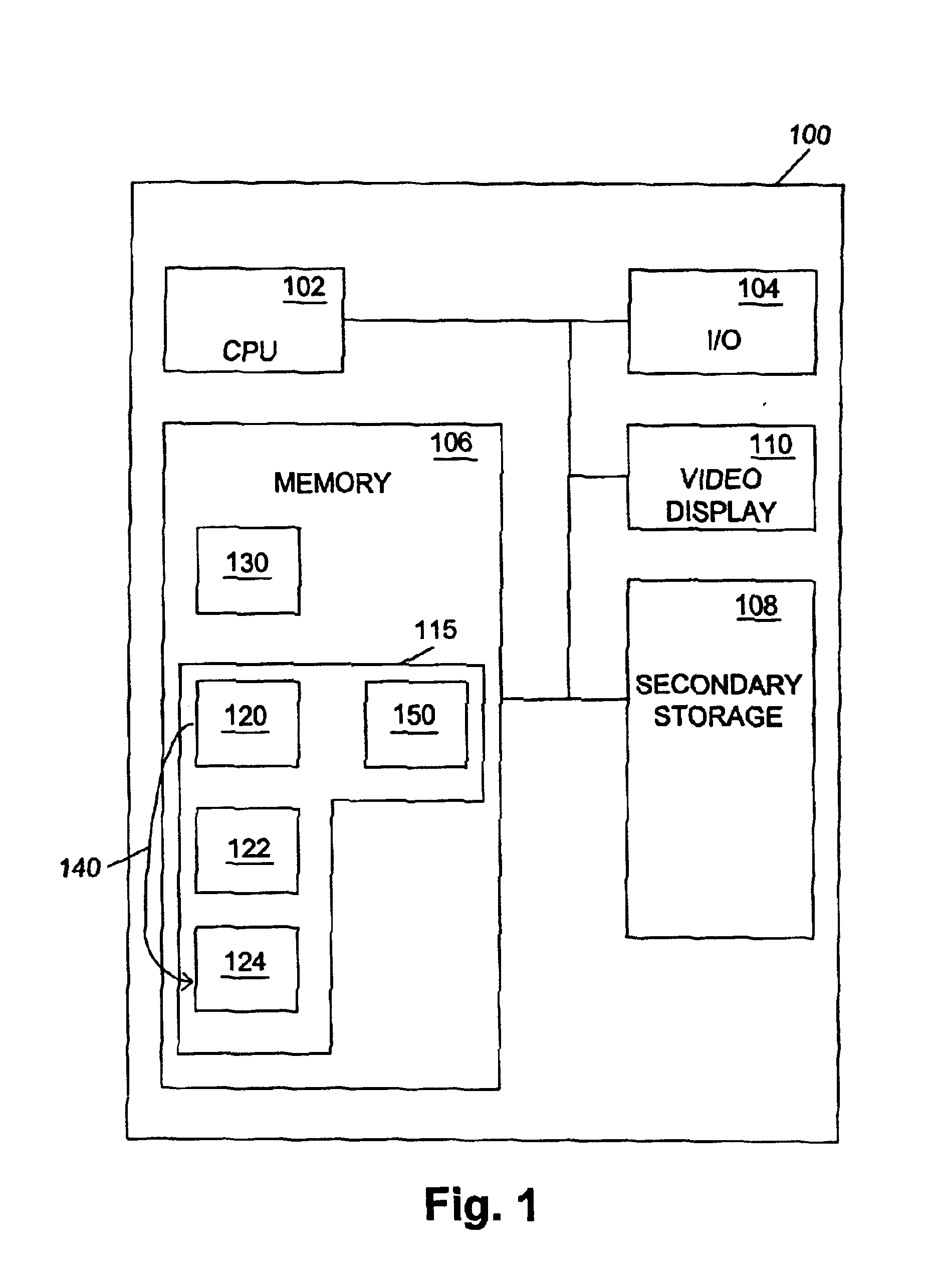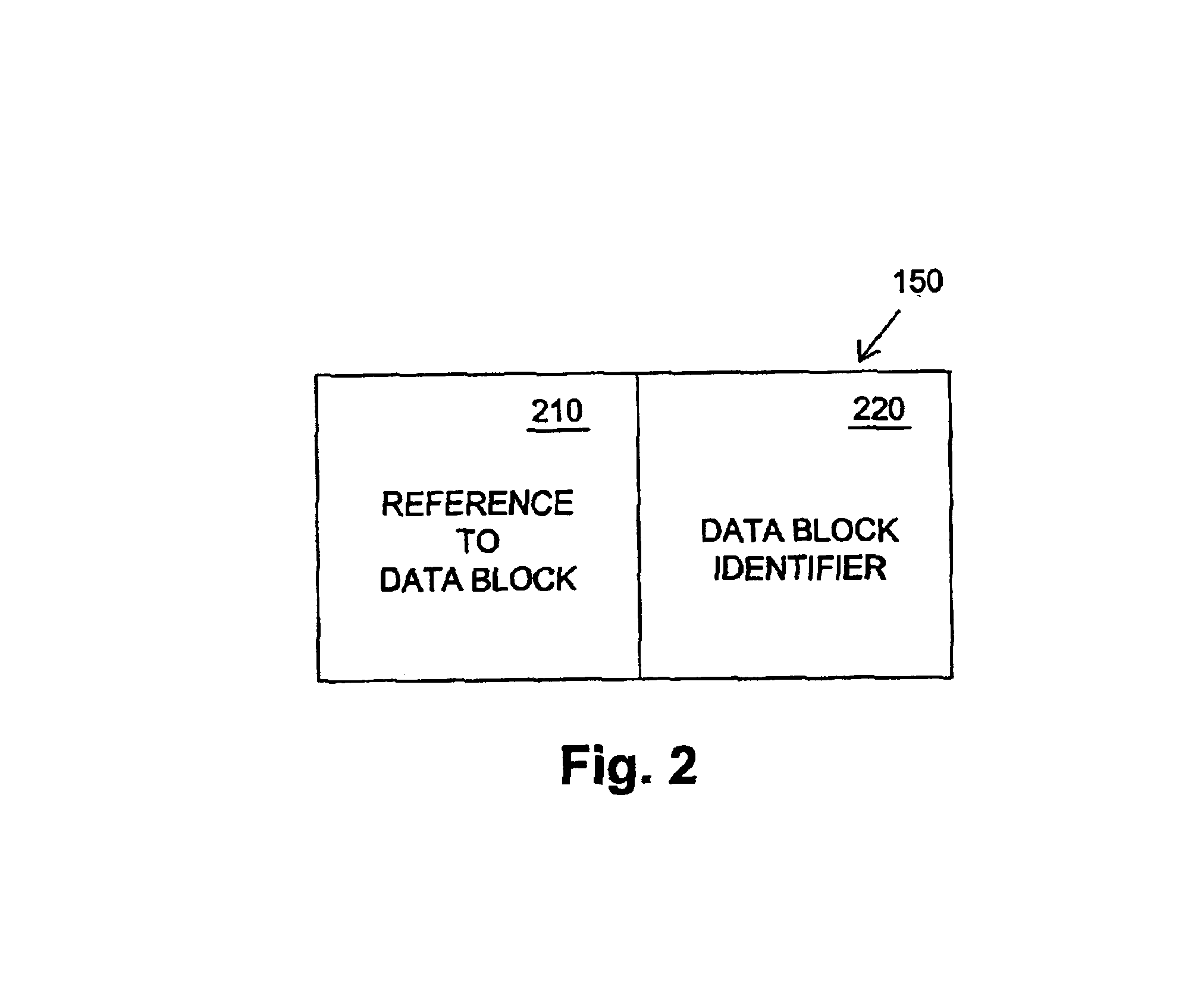Methods and systems for eliminating data redundancies
data redundancy technology, applied in data processing applications, code conversion, instruments, etc., can solve the problems of insufficient approach and inability to have full knowledge of all allocated data blocks, and achieve the elimination of data redundancy in a data processing system, save memory space, and eliminate data redundancy of storing multiple copies.
- Summary
- Abstract
- Description
- Claims
- Application Information
AI Technical Summary
Benefits of technology
Problems solved by technology
Method used
Image
Examples
Embodiment Construction
[0048]Reference will now be made in detail to an implementation consistent with the present invention as illustrated in the accompanying drawings. Wherever possible, the same reference numbers will be used throughout the drawings and the following description to refer to the same or like parts.
[0049]In accordance with methods, systems, and articles of manufacture consistent with the present invention, data redundancies are eliminated by determining whether newly received data blocks are redundant to previously received data blocks. A data block identifier for a newly received data block is obtained and compared to known data block identifiers. The data block identifiers are, for example, checksums. If it is determined that the data block identifier already exists, then it is known that the data block was previously received. Thus, the newly-received data block can be identified accordingly. For example, the newly-received data block can be deleted.
[0050]For example, if two processes...
PUM
 Login to View More
Login to View More Abstract
Description
Claims
Application Information
 Login to View More
Login to View More - R&D
- Intellectual Property
- Life Sciences
- Materials
- Tech Scout
- Unparalleled Data Quality
- Higher Quality Content
- 60% Fewer Hallucinations
Browse by: Latest US Patents, China's latest patents, Technical Efficacy Thesaurus, Application Domain, Technology Topic, Popular Technical Reports.
© 2025 PatSnap. All rights reserved.Legal|Privacy policy|Modern Slavery Act Transparency Statement|Sitemap|About US| Contact US: help@patsnap.com



